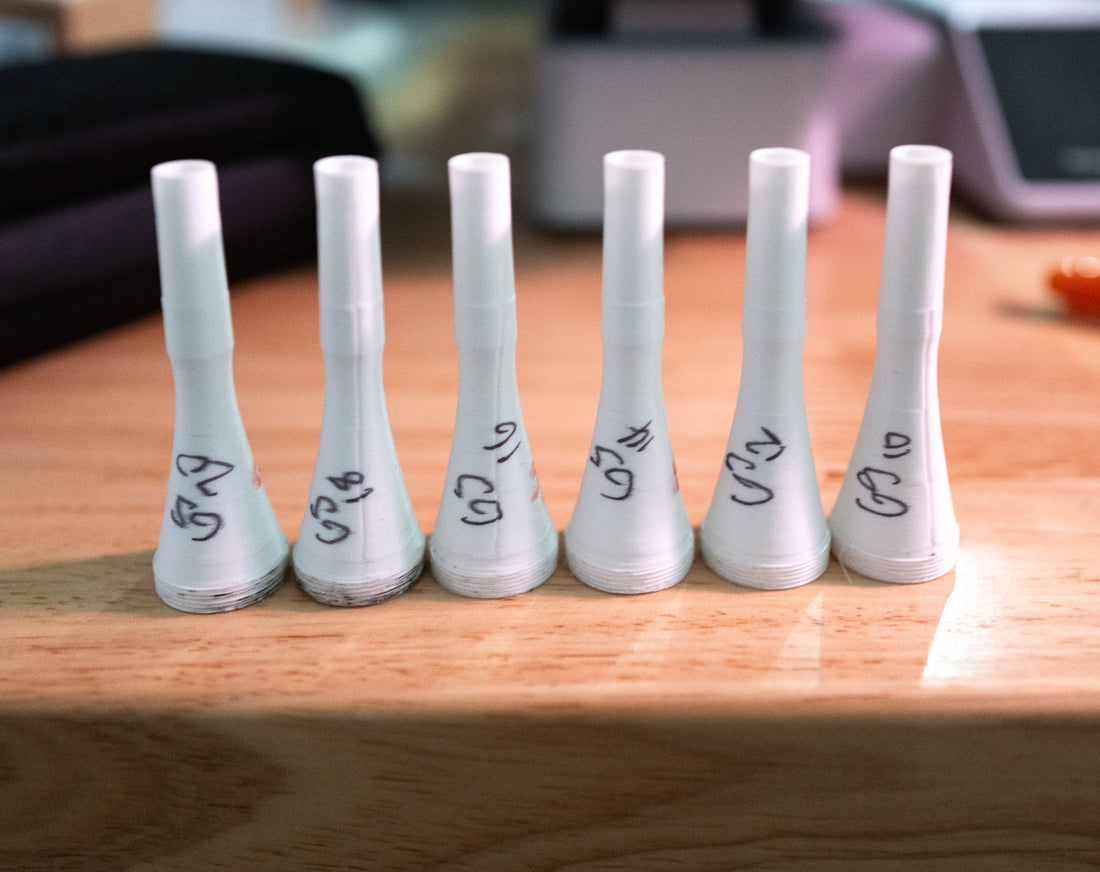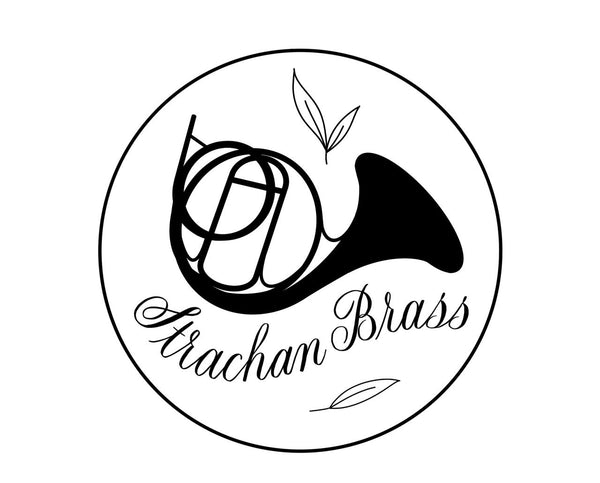Bore size and it's effects on the mouthpiece
Share
(and why we only offer our models in one size)
Preface:
How much does the bore affect the mouthpiece? And is the result linear, non-linear? Is there a "best" size?
These are questions that I've attempted to answer here today by printing out a collection of 6 otherwise identical cups in the "Geyer Studio" family, sized #20 through #10 in increments of 2.
Findings:
What I've found very much surprised me; there are essentially (at-least, maybe if we expanded the search space we'd find more) 3 distinct groupings of bore sizes - 2 workable and 1 not.
For lack of better words, since I've never seen this concept described before, we have the following groups:
Smaller bores (#16-20) we'll call "control" bores where the back pressure of the small mouthpiece bore gives the player a great deal of control in the sound color and placement of the pitches. On the smaller (#20) end it's too choked to be practical for this particular set of design parameters and on the larger end (#16) we see the very smooth slurs characteristic of the model GS.
At #12 we get what we'll call a "free" bore - where the air stream passing through the bore produces a notably different tone with a robust core. We also observe this is substantially louder. At #10 we see more pitch flexibility still & even more sound output though it's too flexible on pitching to be usable.
At #14 we get what we'll call a "transitional" bore - where the the very smooth slurs of the #16 become pitch instability, the edge of the "control" bores brightens up to "break up" but we don't get the increased core of sound from the "free" bores. This is not a good acoustic match for the instrument and has the worst results. As an anecdote, the GS14 was the original prototype for the model GS and performed so poorly it almost got the entire model cancelled. In this case the "safe" choice of choosing a medium bore and trying to iterate nearly lead to a very poor outcome and it was only by blind luck that the #16 ended up proving successful.
Another observation is the control of the lower register, counter intuitively, worsens substantially as the bore grows. We get the best results at around #18 with larger bores robbing the low notes of their efficiency.
Takeaway:
The takeaway here is that there's a reason the market has seemingly evolved into two camps; one with small bores (Alexander, Josef Klier, Yamaha, etc) and one with much larger bores (Osmun, Houser) and few with broad bore ranges on the same model.
It also explains why the great Tom Greer offered a lot of cups sized #8-12 and a handful of #16-20 but seemingly very few, if any #14s!
This test changes up how we think about mouthpieces here; since the bore has such a profound impact on how the cup performs, we're restricting our models to all be a single bore; instead of offering up different sizes of each model, we're just going to offer different models going forward.
You can also now divide our product range into "control" mouthpieces (M, MD, G, GM & GS) and "free flow" mouthpieces (LA, C) as a way to think about them.
More testing details below, including a recording sample:
First lets explain what we're talking about with the bore. Historically this was formed in a machined mouthpiece with a literal drill bit to make a cylindrical section of the mouthpiece, referred to as the bore.
Our mouthpieces don't have a cylindrical section, the transition into and out of the backbore is curved and so it's not entirely apples to oranges. In mouthpieces with a cylindrical section the bore size determines the length because it's length is determined by the intersection points with the backbore and cup tapers. In our mouthpieces the backbore and cup are re-optimized for each "bore" size automatically.
With that caveat out of the way, the following table shows the bore sizes of each mouthpiece in both drill sizes and mm for convenience.
#10 - 4.91mm
#12 - 4.80mm
#14 - 4.62mm
#16 - 4.50mm
#18 - 4.30mm
#20 - 4.09mm
With the caveats out of the way lets discuss the actual test articles. These are a family of cups with the same depth as our popular "GS" and "GM" models. The #16 cup here is exactly a GS cup.
The test articles were all printed at the same time on the same plate to minimize variance. All samples were played with the same Rim R similarly for consistency. They were played on my 1934 Elkhart 6D. Why a 6D? This particular horn is really accommodating of different mouthpieces so it's a good choice to give all the options a fair showing.
Take a listen; each size #20 through #10 played in a set of 4 excerpts, the first to showcase the high range, the second to showcase the low, the 3rd is from Korngold to show ff and the 4th is a quiet solo from Gipps Symphony 2.
What you don't hear are the removed takes where I chipped a note or there was some other playing defect. Instead I'll just enumerate them here;
#20 - chipped high C that was hesitant to speak in the first excerpt.
#18 - clean
#16 - clean
#14 - chipped high C 2x, cracked ff at the end of the Korngold
#12 - clean
#10 - chipped note at the end of the first excerpt.

